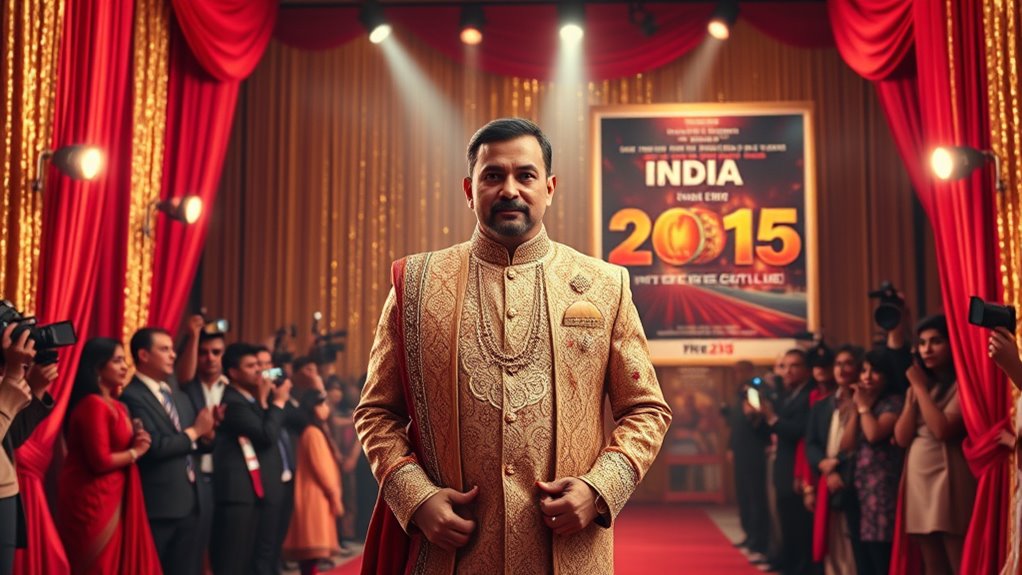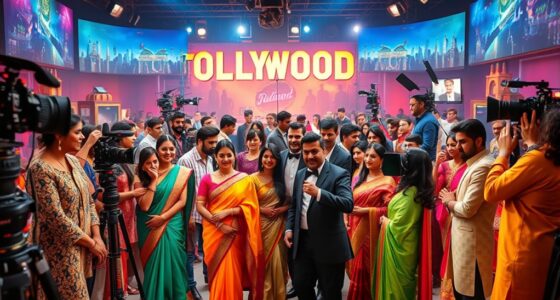India’s choice of *Laapataa Ladies* as its official entry for the Oscars 2025 has sparked significant debate. While it’s praised for its socially relevant, quirky storytelling, controversy surrounds plagiarism allegations and concerns over the selection process’s transparency. This film marks a milestone in Indian cinema’s push for international recognition, joining other regional films like *Putul*. To uncover more about this evolving story, explore how Indian movies are gaining global acclaim despite challenges.
Key Takeaways
- India selected “Laapataa Ladies” as its official entry for Oscars 2025, amid controversy over plagiarism allegations.
- The film highlights rural gender issues through satire but faces scrutiny over originality and selection transparency.
- Seven Indian films from various regions, including Tamil, Malayalam, Bengali, and Hindi, are contenders, showcasing diversity.
- “Putul,” a Bengali film about street children, marks a historic milestone as India’s first Bengali Oscar contender for Best Picture.
- The selection process and regional cinema’s global recognition are fueling discussions on fairness and India’s cinematic representation.
The Selection of Laapataa Ladies as India’s Official Entry
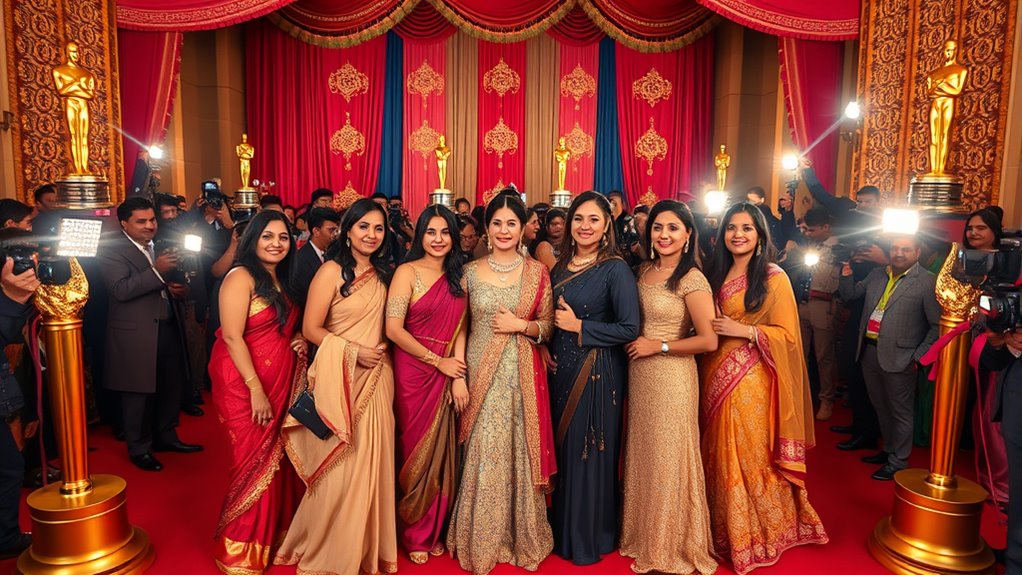
The selection of “Laapataa Ladies” as India’s official entry for the Oscars 2025 marks a significant moment in Indian cinema. Directed by Kiran Rao, this quirky comedy tackles gender dynamics and patriarchy in rural India through the story of two brides who go missing during a train journey. The film presents a satirical view of societal norms, offering a fresh perspective on cultural issues. Chosen by the Film Federation of India, it beat other contenders like “All We Imagine As Light” and “Aattam” to represent the country. This decision highlighted the Federation’s interest in showcasing socially relevant, innovative films. While the selection was celebrated as a milestone, it also sparked debate about India’s cinematic direction and representation on the global stage. Additionally, the film’s satirical approach reflects a growing trend of socially conscious storytelling in Indian cinema. The emphasis on cultural critique aligns with the increasing demand for films that challenge traditional narratives and provoke discussion.
Contenders in the Running for Oscars 2025 From India
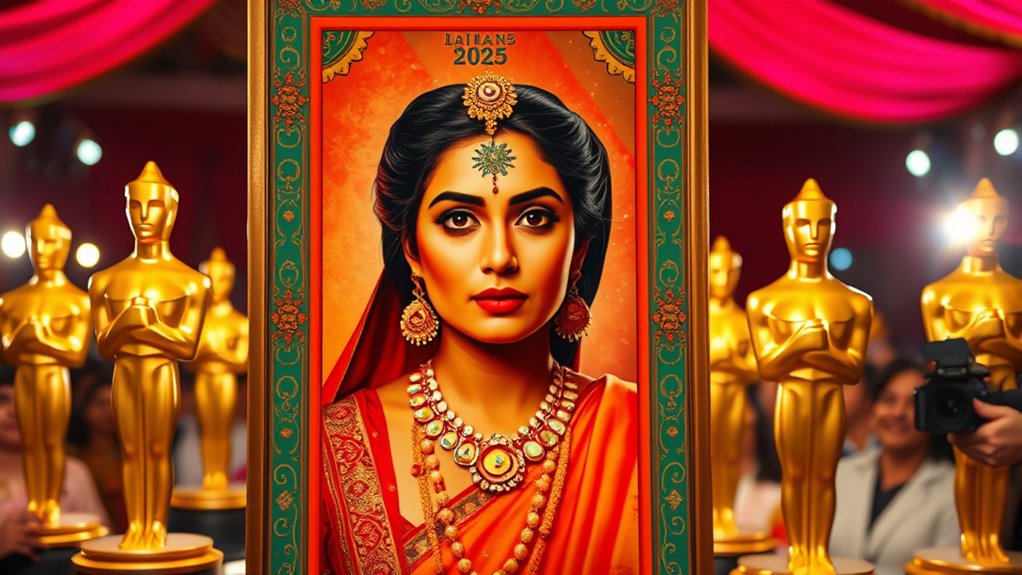
Among the diverse pool of Indian films vying for Oscars 2025, seven have made it to the contenders list out of 207 eligible titles. These films span multiple languages and regions, showcasing India’s cinematic variety. Here’s what stands out:
- Kanguva (Tamil) and Aadujeevitham (Malayalam) are among the regional contenders, highlighting Tamil and Malayalam cinema’s strength.
- Santosh and Swatantrya Veer Savarkar (Hindi) reflect diverse storytelling within Hindi film industry.
- Putul, the first Bengali film to compete for Best Picture, marks a historic milestone.
- All We Imagine as Light (Malayalam-Hindi) and Girls Will Be Girls (Hindi-English) demonstrate the blend of languages and styles.
- The inclusion of these films indicates the increasing recognition of Indian cinema across different categories at the Oscars, which reflects a broader trend of growing international acknowledgment of India’s diverse film landscape.
The Controversy Surrounding Laapataa Ladies

You might wonder how the selection process for India’s Oscar entry sparks debate, especially with allegations of plagiarism swirling around Laapataa Ladies. This controversy raises questions about cultural representation and whether originality is being overlooked. As this unfolds, it’s clear that the film’s reputation and recognition could be impacted by these ongoing concerns. The controversy has also brought attention to the importance of scrutinizing the originality of films submitted for international awards, highlighting the role of fraud prevention tools in maintaining integrity. Additionally, the controversy underscores the need for thorough ethical standards in the film industry to ensure fair evaluation processes. Implementing quality control measures can further support the detection of intellectual property issues and uphold industry credibility. Incorporating data-driven marketing strategies can help industry stakeholders promote transparency and uphold credibility in such sensitive situations. Moreover, fostering awareness of intellectual property rights among creators and industry professionals can prevent future disputes and promote ethical practices.
Selection Process Concerns
Critics have raised serious concerns about the selection process that led to Laapataa Ladies being India’s official entry for Oscars 2025. The Film Federation of India (FFI) considered 29 films but faced public criticism for favoring technical aspects over broader themes. Many industry figures and fans questioned the transparency and criteria used, especially after films like Payal Kapadia’s “All We Imagine As Light” were overlooked. Social media erupted with backlash, hashtag campaigns, and calls for reform. Critics argue that the selection process lacked fairness and inclusivity, with some doubting the jury’s expertise. Despite FFI’s defense citing technical merits, the controversy highlights ongoing dissatisfaction with how India’s submissions are chosen, fueling demands for greater transparency and reform in the process.
Cultural Representation Debate
The controversy surrounding *Laapataa Ladies* has ignited a fierce debate over its originality and cultural representation. Social media comparisons reveal striking similarities between this film and the French-Arabic short *Burqa City*, leading to plagiarism accusations. Both movies center on veiled women and involve mistaken identities—*Laapataa Ladies* features two brides swapped during a train journey, while *Burqa City* involves a man accidentally bringing home the wrong veiled woman. Critics question whether the film’s themes of feminism and social commentary are genuinely original or heavily influenced. The debate underscores concerns about transparency and respect for creative work in Indian cinema. The controversy also highlights the industry’s ongoing struggle with issues of creative originality, which has long been a point of contention among filmmakers and audiences alike. This controversy challenges filmmakers to acknowledge inspirations and prompts viewers to scrutinize the cultural authenticity behind Oscar entries.
Impact on Film Recognition
- The film’s selection process faced scrutiny over its criteria and perceived biases
- Critics and fans debate whether the film truly represents Indian cinema’s diversity
- Its failure to reach the final shortlist dims its international recognition
- The controversy fuels discussions on future selection transparency and fairness
These factors can diminish the film’s global credibility, impacting perceptions of Indian cinema’s quality and diversity. Such controversies may influence future submissions and how international audiences view Indian films.
The Impact of the Film’s Selection on Indian Cinema
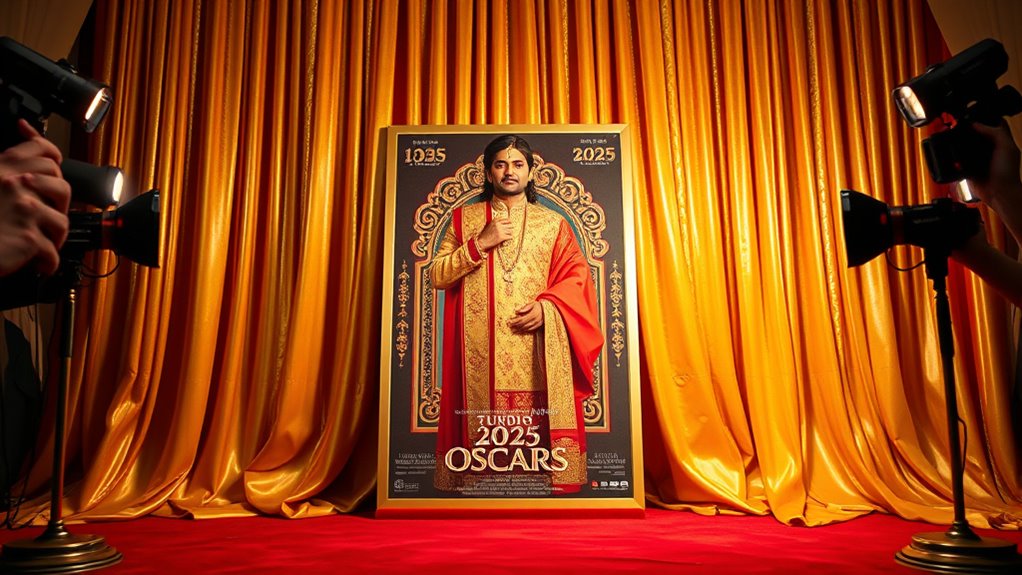
Oscar selection profoundly shapes Indian cinema by influencing the themes filmmakers pursue and the stories they tell. When only socially conscious or stereotypical narratives are chosen, it encourages filmmakers to tailor their stories toward these perceived Oscar-friendly themes, often limiting creative diversity. This focus can result in a narrower range of genres and styles, sidelining experimental or culturally rich stories that don’t fit conventional molds. Additionally, the selection process impacts industry trends by directing funding, distribution, and international exposure toward certain types of films. While Oscar recognition can elevate regional language films and foster cross-cultural storytelling, it also risks stifling creative risks and reinforcing stereotypes. Furthermore, the selection criteria often emphasize certain narrative qualities over others, shaping the overall landscape of Indian cinema. Ultimately, broadening the criteria for selection can inspire more authentic, diverse cinematic voices and deepen India’s global cinematic impact.
The Journey of Putul: A Historic Bengali Oscar Contender
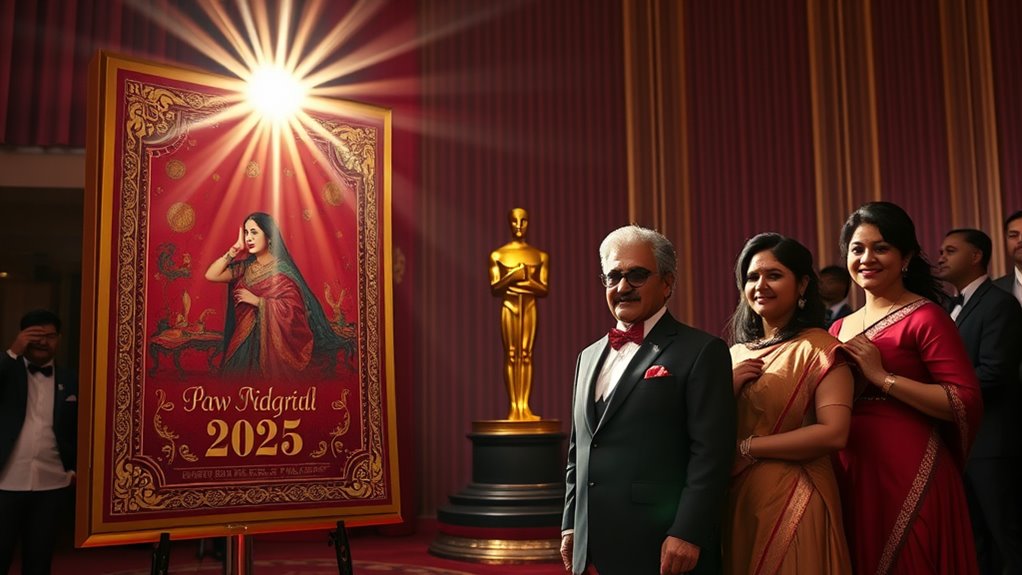
Putul marks a major milestone for Bengali cinema, as it’s the first film from the region to be considered for an Oscar Best Picture. Its selection highlights the growing global recognition of regional Indian films and the talent behind them. This journey not only celebrates Bengali storytelling but also inspires filmmakers across India to aim for international acclaim. Moreover, the increasing presence of regional film awards and recognition at international platforms demonstrates the expanding influence of diverse narratives in global cinema.
Bengali Cinema Milestone
This historic achievement marks a significant milestone in Bengali cinema, as it becomes the first film from the region to be selected for Oscar Best Picture contention. Your achievement highlights the global recognition of Bengali storytelling and artistic excellence. It’s a breakthrough, not just for Putul, but for the entire industry. You should feel proud that:
- Bengali cinema is now part of the international awards conversation
- Putul’s selection signals growing recognition for regional Indian films
- It encourages independent filmmakers in non-mainstream languages
- This milestone opens doors for future Oscar contenders from Bengal and beyond
Your film’s journey proves that regional stories can reach worldwide audiences. It’s a proud moment that elevates Bengali cinema to new heights, inspiring many to dream bigger.
Significance of Putul
The selection of a Bengali film as a contender for Best Picture at the Oscars marks a historic moment that underscores the growing global recognition of regional Indian cinema. Putul’s journey highlights the power of authentic storytelling, focusing on the lives of street children and underprivileged families in urban India. Its themes of class, grief, and community resonate universally, while the subtle humor balances grim realities, ending on an uplifting note. Filmed on real locations with lesser-known actors, it showcases raw performances and social messages that strike a chord with audiences and critics alike. The film’s success at Cannes and international festivals, along with its Oscar contention, signals a breakthrough for regional cinema, opening doors for more diverse stories from India to gain global acclaim. Additionally, the use of Intelligent Tutoring Systems in education reflects a broader trend of innovative storytelling and engagement that can influence cultural narratives worldwide. The weight of wind turbine blades and other renewable energy innovations exemplify how technology is advancing storytelling and communication in today’s world, fostering greater awareness and understanding. Moreover, the evolving Oscars selection process demonstrates the increasing importance of regional voices and stories in the global cinematic landscape. This shift is further supported by the rise of specialized film festivals that showcase regional cinema, helping these stories reach international audiences and critics alike.
Other Notable Indian Films in the Oscar Race
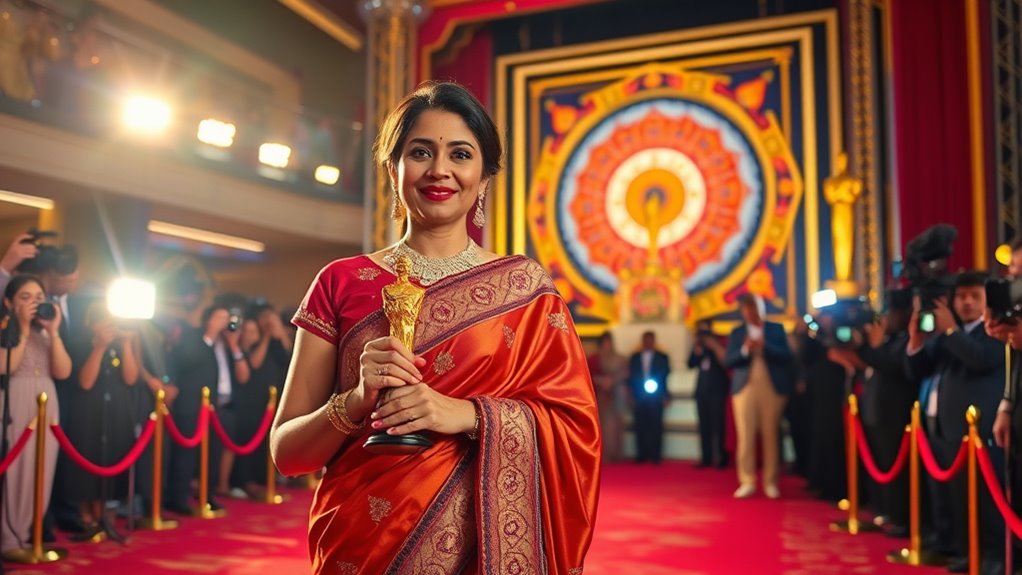
Several Indian films are making notable waves in the 2025 Oscar race, reflecting the country’s expanding presence beyond traditional Bollywood fare. You’ll see diversity across languages and genres, highlighting India’s rich cinematic landscape.
Indian cinema’s global reach is growing with diverse films competing at the 2025 Oscars.
- Seven Indian films are among the 207 eligible for Best Picture, including Tamil, Malayalam, Hindi, Bengali, and bilingual titles.
- Films like Kanguva *Aadujeevitham*, and *Putul* showcase regional storytelling and have gained international attention.
- Indian entries also shine in other categories, with Anuja earning a historic nomination for Best Live Action Short Film.
- Documentaries like I Am Ready and *Warden* demonstrate India’s growing strength outside mainstream features. These films reflect India’s expanding influence at the Oscars and a broader global recognition of regional cinema.
- Additionally, understanding the operating hours for Indian films and related events can help audiences plan their viewing schedules effectively during the awards season. Access to distribution channels can further enhance viewers’ ability to experience these diverse films.
The Shortlisting Process and Its Significance

Indian films aiming for Oscar recognition undergo a rigorous shortlisting process that underscores the competition’s global scope. The Film Federation of India (FFI) manages this process, inviting filmmakers to submit eligible films that meet specific criteria, such as length, language, and theatrical release. A special committee, often led by industry veterans, reviews submissions and narrows them down to a shortlist of 15 from 85 entries. Another committee then reviews English-subtitled copies to select the final five nominees. This process highlights the intense global competition and the importance of cultural representation. It also sparks debates about fairness and selection criteria fairness and selection criteria. While only a few Indian films have made it to the final nominations, the process emphasizes the challenge of balancing artistic merit with international appeal. The shortlisting process also demonstrates the significant effort involved in ensuring diverse and high-quality entries are considered for global recognition, emphasizing the importance of evaluating submissions fairly.
Challenges Faced by Indian Films on the International Stage
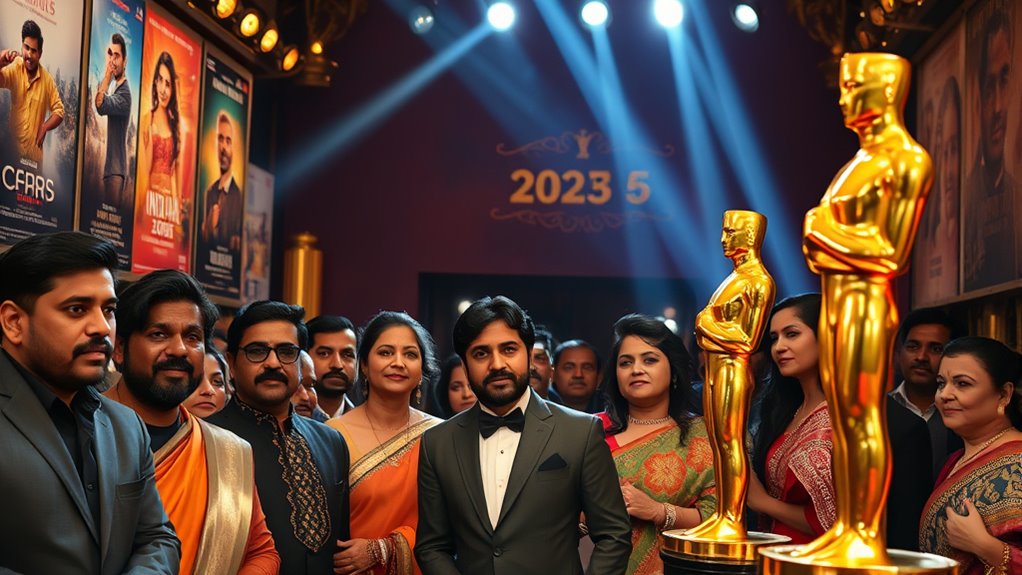
Language and cultural barriers considerably hinder Indian films from making a strong impact internationally. You’ll notice that many Indian movies are made in regional languages, which limits their appeal to global audiences unfamiliar with subtitles. The themes and humor rooted in Indian culture often don’t resonate universally, making it harder for juries to connect. Poor subtitling can dilute the film’s nuance, and Western audiences sometimes see Indian genres—like song-and-dance or melodrama—as less sophisticated. Additionally, Indian films struggle with distribution channels, which further restricts their reach and visibility in international markets. Indian films also face challenges such as:
- Limited international promotion and distribution channels
- Fewer Indian entries at major festivals
- Smaller publicity budgets for foreign markets
- Lack of awareness about Indian cinema outside Bollywood
- Cultural relevance issues that hinder international acceptance and appreciation. The absence of extensive global marketing strategies further constrains their reach beyond traditional audiences. Moreover, the lack of international awards recognition limits their credibility and exposure globally. Developing cultural adaptation strategies could help Indian films better connect with diverse audiences worldwide.
The Growing Global Recognition of Indian Filmmaking
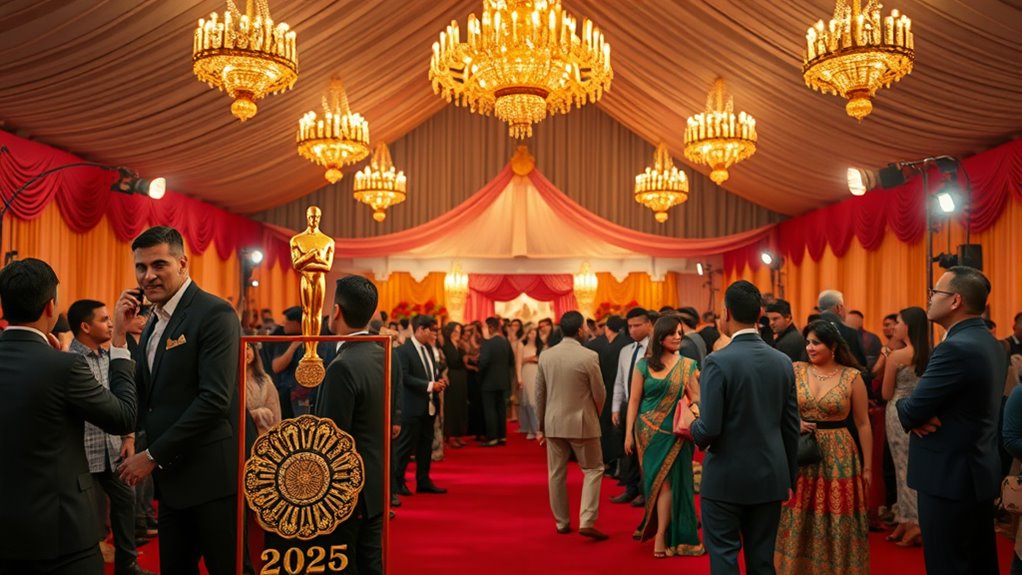
The global recognition of Indian filmmaking has surged in recent years, driven by increased international nominations, awards, and collaborations. You’ll notice India ranks second globally in new film and TV projects for Q1 2025, just behind the US, with 968 projects. Scripted content, contributing 71% of global production growth, showcases India’s expanding influence. Regional industries like Telugu and Tamil now surpass Bollywood in box office revenue, reflecting diversity’s strength. Indian cinema consistently leads worldwide in annual output, attracting international demand and making India a key production hub. Films and filmmakers are earning awards and nominations at major festivals like Cannes and the Oscars, boosting their global profile. This recognition highlights India’s vibrant, innovative, and influential cinematic landscape on the world stage. Additionally, the rise of diverse film styles and regional industries has further cemented India’s reputation as a major player in global cinema.
Future Prospects for Indian Cinema at International Awards

As Indian cinema continues to gain international recognition, its prospects at upcoming awards look promising. You’ll notice that films like *Chhaava* and *L2: Empuraan* are making waves globally, with impressive box office numbers and strong overseas collections. High budgets and growing investor confidence reflect the industry’s global appeal. You’ll also see a surge in diverse genres and languages, from Hindi historical dramas to Malayalam thrillers, broadening cultural reach. Award-winning films like *Laapataa Ladies* showcase storytelling and technical excellence, increasing chances for international recognition. Additionally, Indian films are becoming regular contenders in prestigious awards like the Oscars, supported by increased festival presence, industry collaborations, and government efforts. Streaming platforms also help bring Indian cinema to a worldwide audience, boosting future award prospects.
Frequently Asked Questions
Why Was Laapataa Ladies Chosen Over Other Indian Films?
You might wonder why Laapataa Ladies was chosen over other Indian films. The selection committee valued its authentic portrayal of rural life, women’s perspectives, and cultural diversity. They appreciated its fresh narrative and directorial vision, believing it would resonate internationally. Despite its eventual exclusion from the Oscar shortlist, the film stood out for capturing unique Indian stories, making it a bold choice that aimed to showcase India’s cinematic richness.
How Does the Oscar Selection Process Work for International Films?
You’re curious about how the Oscar selection process works for international films. First, each country chooses one film that’s primarily in a non-English language and meets release rules. A committee reviews all eligible films, then votes secretly to pick the country’s official entry. The selected film is submitted to the Academy, shortlisted, and finally voted on by members who’ve viewed all contenders. The best film wins the Oscar.
What Controversies Surrounded Laapataa Ladies’ Selection as India’S Entry?
Imagine a ship steering stormy waters—your question about Laapataa Ladies’ selection mirrors that turbulence. You see, the controversy erupted because many believed the film lacked the strength to represent India internationally. Critics questioned the transparency of the process, and social media roared like thunder, demanding change. Despite defendable reasons from the jury, public opinion questioned the decision, highlighting the choppy seas India faces in its Oscar journey.
How Has Indian Cinema’S Global Reputation Changed Recently?
You’ve noticed Indian cinema’s global reputation improving lately. It’s because India now produces nearly 2,500 films annually, dominating global film output. Your industry’s diverse stories and cultural themes resonate worldwide, boosting recognition. International collaborations and high box office earnings further enhance its reputation. You see Indian films expanding into global markets, earning awards, and influencing other industries, all of which strengthen India’s standing as a major player in global cinema.
What Are the Future Prospects for Indian Films at the Oscars?
You’re wondering about the future of Indian films at the Oscars. With increasing international interest, Indian cinema has a real chance to break barriers by telling authentic, diverse stories that resonate globally. Leveraging digital platforms and fostering international collaborations can boost visibility. As Indian filmmakers experiment with new narratives, your hope is that the Oscars will recognize more of India’s rich, varied cinema, leading to greater success in future years.
Conclusion
As you follow India’s journey at the Oscars, remember that out of over 1,000 films submitted globally, only a handful make it to the final round. Laapataa Ladies’ selection marks a significant step, showcasing India’s evolving cinema scene. With increasing international recognition, your support fuels the dreams of filmmakers endeavoring to put Indian stories on the world stage. The future is bright, and every nomination brings us closer to global acclaim.
